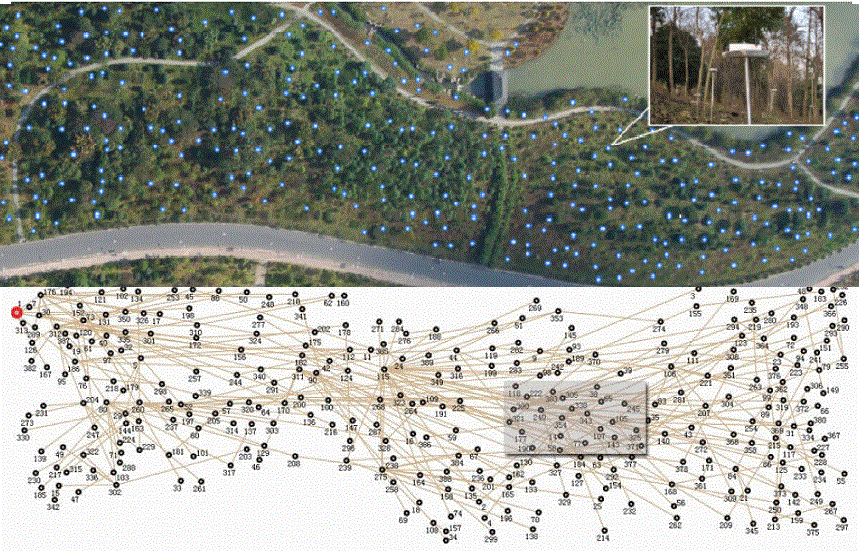Researches
Sensor Network System
GreenOrbs


GreenOrbs is a long-term wireless sensor network system to monitor the forest environment since 2009. On one hand, GreenOrbs realizes all-year ecological surveillance in the forest, collecting various sensory data including temperature, humidity, illumination, and carbon dioxide titer. On the other hand, GreenOrbs pioneers the effort in the sensor network community to build a practical system. Through the real-world experience in GreenOrbs, we expect to explore the potential design space and scientific solutions, especially addressing the research and engineering challenges for a wireless sensor network system that is deployed in the virgin forest, involves 1000+ sensor nodes, and needs to operate for over one year.
In April 2011, we launched the CitySee system as the extention of GreenOrbs into urban CO2 monitoring area. The goal of CitySee is to deploy thousands of wireless sensor nodes in an urban area of Wuxi City, China, such that multi-dimensional data including CO2, temperature, humidity, light, location, and etc. could be collected in a real-time manner for further analysis. The main applications of CitySee include measuring the carbon absorbance and emissions in different zones of a city, supporting the government’s policy decision in energy saving and emission reduction, and offer citizens with convenient daily living services.
Resources
Pangu: A Software-defined Wireless Sensor Network

Software-defined networking (SDN) is deemed as a promising direction to offer the generalizability of wireless sensor networks (WSN). To introduce SDN into WSNs, however, means a series of non-trivial challenges due to the wireless and ad-hoc nature of WSNs. In this project, we present our study towards a software-defined architecture for multi-function wireless sensor networks. Our proposal called Pangu is built upon the opportunistic routing protocol stack and introduces the concept of modality properties of sensor nodes. It enables centralized network control over a WSN while preserving the flexibility of underlying ad-hoc routing. We tackle the critical problems of the architecture design by presenting three essential components of Pangu. Moreover, we implement Pangu on a real-world testbed and evaluate it with various experiments. Pangu appears in IEEE ICPADS 2017 and wins the best student paper award.